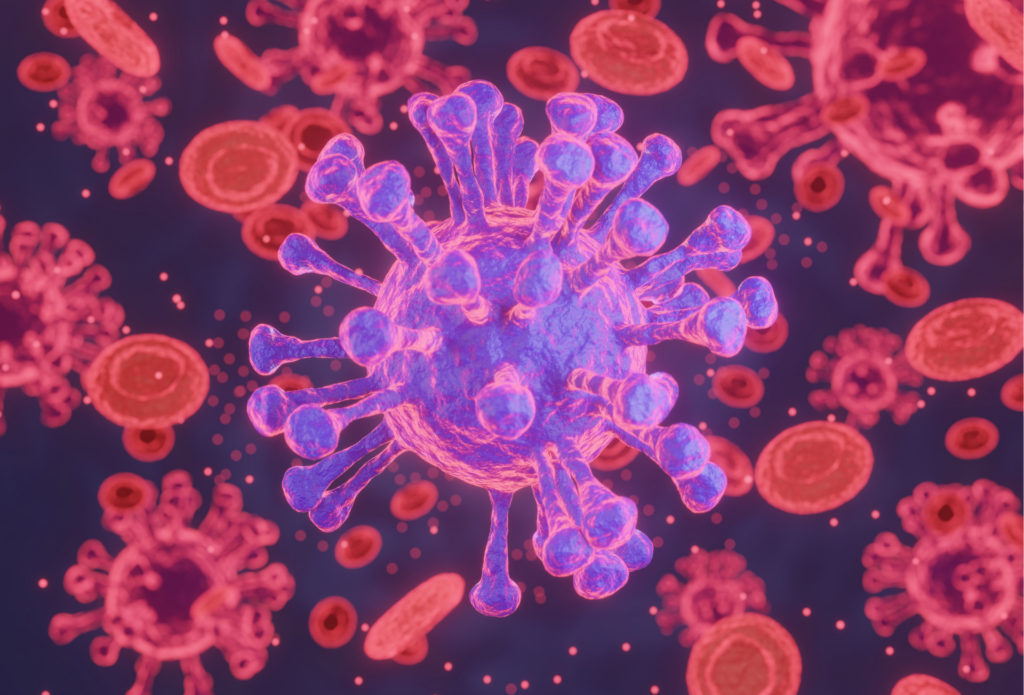By Dr. Wally Taylor
stealth (definition)- cautious and surreptitious action or movement. synonyms: furtiveness, secrecy, surreptitiousness, sneakiness, slyness.
| Varro, in the first century B.C., had said that swampy land was dangerous because “certain minute animals, invisible to the eye, breed there, and borne of the air reach the inside of the body by way of the mouth and cause disease.” |
Since the days of great early physician-scientists including Pasteur, Koch, Jenner, and Lister it has been accepted that human disease often results from the presence and activity of tiny living creatures that we know as germs.
When a microorganism or germ infects an individual often disease occurs quickly which is characterized by fever, swelling, pain, redness and symptoms including vomiting, cough, malaise, and fatigue. This classic presentation of infection which is readily apparent is appropriately termed active infection or acute infection.
Medical discovery is now demonstrating that a wide array of symptoms and signs of disease are associated with infection of a different sort. The concept that microorganisms are able to persist in the body and continue to produce illness over weeks, months, or even years is becoming more widely appreciated.
This concept is really nothing new at all. Examples of persistent infection which continues to cause disease is readily accepted in diseases including syphilis, tuberculosis, AIDS, Lyme Disease, and chronic hepatitis just to name a few. In addition, the reemergence of symptoms following prior infection is readily accepted in diseases including recurrent Herpes sores, shingles following chicken pox, rheumatic heart disease following Strep infection, pneumonia following Histoplasmosis fungus infection, and many others. What is less commonly appreciated is the relationship of many other cases of long-lasting illness associated with a wide and diverse group of microorganisms capable of causing stealth infection.
Today many patients with persistent, unexplained symptoms of disease are very likely to be manifesting illness resulting from persistent stealth infection.
A list of symptoms that are associated with stealth infection include fevers, sweats, chills, flushing, weight gain, weight loss, fatigue, tiredness, exhaustion after limited exertion, unexplained hair loss, swollen glands, sore throat, pelvic pain, unexplained menstrual irregularity, breast pain, irritable bladder, sexual dysfunction, loss of libido, upset stomach, constipation, diarrhea, abdominal bloating, chest pain, rib soreness, shortness of breath, cough, heart palpitations, rapid heart beat, joint pain, joint swelling, joint stiffness, neck pain, neck stiffness, back pain, back stiffness, muscle pains, muscle cramps, twitching muscles, twitching face, headaches, numbness, tingling, burning sensations, stabbing sensations, tremors, seizures, facial paralysis, blurred vision, double vision, dark vision, ringing of ears, light headedness, poor balance, difficulty walking, muscle weakness, ear ringing, vertigo, hearing loss, motion sickness, ear pain, difficulty concentrating, confusion, disorientation, getting lost, poor memory, trouble talking, trouble writing, mood swings, irritability, depression, anxiety, panic attacks, disturbed sleep, excess sleepiness, and headaches. Some of these symptoms may be seen in diseases not resulting from stealth infection. Different combinations of these symptoms are seen in different cases of stealth infection.
Medical science is discovering an emerging connection between stealth infection and many well-known diseases that have not commonly been associated with an infectious cause in the past. Some examples of diseases possibly caused by stealth infection include Alzheimers, autism, arthritis, epilepsy, diabetes, obesity, heart disease, stroke, certain cancers, hepatitis, Crohn’s disease, Ulcerative colitis, Chronic Fatigue Syndrome, fibromyalgia, chronic depression, Schizophrenia, eczema, psoriasis, asthma, cardiomyopathy, infertility, interstitial cystitis, endometriosis, Polycystic Ovarian Syndrome, Hashimoto’s thyroiditis, Lupus, Sarcoidosis, Parkinson’s disease, Amyotrophic Lateral Sclerosis (ALS/Lou Gehrig’s disease), adrenal disease, immunodeficiency syndromes, chronic inhalant allergy, chronic food allergy, autoimmune syndromes, and many others.
In this serious of articles I will explore the answers to a number of questions regarding stealth infection in an effort to better familiarize the reader with this group of diseases and how to more effectively diagnose, prevent, and treat these ever-present sources of human misery.
Why have stealth infections not been appreciated and previously recognized?
Probably the main reason that stealth infection has not been more widely appreciated is due to the fact that the microorganisms that cause stealth infection have been very difficult to recover and grow in the laboratory. In fact the presence of certain germs causing stealth infections have been difficult to find and identify at all. Although some scientists use the term “germ” to refer only to a bacterial organism, in this series of articles I am using the term to also include viruses, molds, fungi, yeasts, rickettsia, and single cell parasites. In the last several decades the ability to find, isolate, and identify these microorganisms has rapidly advanced. There is still a lot of work yet to do in this area. Diagnosis of stealth infection continues to be plagued by issues of cost and unreliability but improvements are occurring rapidly.
Why doesn’t everyone manifest symptoms of stealth infection?
We now know that each one of us has a different susceptibility to manifest disease. This means that two different individuals infected with the same stealth infection-causing germ can manifest completely different symptoms. In fact one person may be very ill while another may have no symptoms at all. This difference in susceptibility is due to many factors. One of the most important factors is our genetic makeup. Another factor is the presence of environmental toxins that affect our susceptibility to disease. Yet another factor is our diet and our levels of various critical nutrients that regulate all our cellular functions including our immune system and our ability to remove harmful toxins from our bodies. Our stress levels alter our susceptibility to manifest disease due to stealth infection. The presence of combinations of different stealth organisms can lead to different manifestations of disease.
In Part 2 I will explore the ways in which stealth infections injure our cells and tissues resulting in the symptoms of disease. I will discuss the role of our immune system in controlling these microorganisms and why we have difficulty in getting rid of them. I will also discuss how our immune system accounts for much of the damage caused by the presence of stealth infection.
About Wally Taylor MD
Wally Taylor MD
Dr. Taylor practices integrative medicine at Forum Health Austin in Austin, Texas. After obtaining a general medical doctorate degree from the University of Texas Southwestern Medical School in Dallas he completed a general medical internship and residency training in head and neck surgery ENT and allergy. After 20 years of service in the US Army Medical Corps and practice in Colorado and Texas, he founded Texas Integrative Forum Health Austin where he now offers a functional holistic approach to disease which treats the entire individual instead of each separate symptom. He has found more satisfying results using this Systems BioIndividualized approach.
His motto is “Health and Wellness from Head to Toe”.









